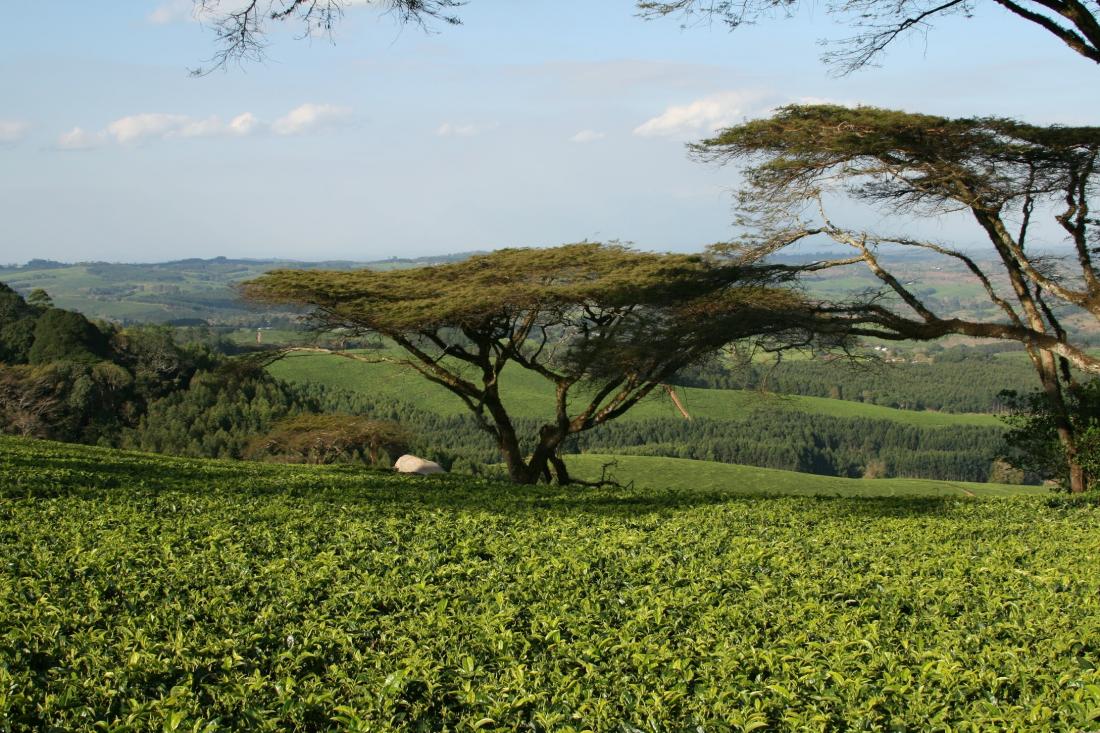Impact of Peer Motivation on Worker Productivity in Malawi
- Rural population
- Workers
- Productivity
- Information
Relatively low worker productivity is often considered to be a barrier to economic prosperity and growth in many low-income countries, including Malawi. Evidence from diverse contexts suggests that coworkers’ productivity may have a significant impact on worker productivity. Researchers at the Lujeri Tea Estates in Malawi evaluated the impact of exposure to more, less, or equally productive peers on tea harvester productivity. They found that increasing the productivity of a worker’s peers meaningfully increased worker productivity, measured in kilograms of tea picked. This result was driven largely by women, whose productivity gains were much larger than those of men.
Policy issue
Relatively low worker productivity is often considered to be a barrier to economic prosperity and growth in many low-income countries, including Malawi. Peer productivity is thought to be an important determinant of worker productivity. Most research on this link comes from contexts where workers produce goods and services collaboratively, and so individual workers’ productivity impacts that of their peers. In these contexts, worker productivity may be impacted by learning from peers, worker friendship, and/or shame resulting from observing more capable peers. What impact does increased peer productivity have on worker productivity in the context of individual production, where workers produce goods and services without collaboration?
Context of the evaluation
Worker productivity is particularly relevant in Malawi’s agriculture sector.1 Malawi’s economy is heavily dependent on agriculture, which accounts for approximately eighty percent of both exports and employment.2 Agricultural productivity is low on average, and this low productivity is often cited as a key driver of Malawi’s high poverty rate.3 Tea, along with tobacco and sugar, is among Malawi’s primary exports.4 The Malawian tea industry has historically been dominated by large estates,5 like the one in this study.
Lujeri Tea Estates in Malawi is a large agricultural firm. The firm employs groups of approximately 45 tea harvesters who pluck tea leaves from the same field for an entire season. Each field is subdivided into multiple plots, each about 25 meters in width. At the beginning of each workday, group supervisors assign the tea harvesters in their group to individual plots. Harvesters are close enough to see one another but not close enough for conversation. Harvesters are paid by the weight of the leaves they collect and earn on average US$7.73 PPP per day.

Details of the intervention
Researchers worked with group supervisors at Lujeri Tea Estates to test the impact of varying the productivity of workers’ peers on worker productivity. Typically, group supervisors would assign workers to plots within fields. In this study, researchers gave group supervisors randomly generated lists, and these lists were used to assign the 999 harvesters to plots within fields. Individual workers were randomly exposed to peers who were harvesting more, less, or the same amount of tea. Harvesters could observe the speed at which other harvesters worked, and the frequency with which they visited a central tea leaf weighing station; however, due to the width of the plots, harvesters were generally not close enough to speak to one another.
Researchers recorded the kilograms of tea picked to measure the impact on worker productivity, using both survey and administrative data. Researchers also collected data on workers’ neighbors, characteristics, and backgrounds, as well as information on social networks by asking workers to name their workplace friends.
Results and policy lessons
Being surrounded by more productive peers meaningfully increased harvester productivity in the absence of learning from peers, friendship among colleagues, or shame at one’s own lower productivity. Workers who worked near more productive peers harvested 0.3 percent more tea per day, or about 0.2 additional kilograms picked per day on a base of 62.19 kilograms picked per day.
Increases in worker productivity did not seem to result from learning or friendship among workers. Individuals in this study were not close enough to verbally communicate with one another, and sixty percent of study participants reported spending no more than ten minutes per day conversing with their peers. Further, increased personal productivity around higher ability peers did not persist between days, suggesting that no learning took place.
Workers preferred to work near higher productivity peers, suggesting that shame associated with low output did not play a significant role in increased productivity. Seventy-two percent of respondents reported a preference for higher-productivity co-workers. Harvesters were given two bars of soap to encourage participation in the survey. Most reported that they would be willing to return at least one bar in exchange for working next to their more productive counterparts, further indicating that shame likely did not play a significant role in increasing worker productivity.
Increased worker motivation seems to have resulted in productivity gains for workers surrounded by more productive peers. Seventy-four percent of harvesters reported that working near highly-productive peers provided motivation. The researchers conclude that the observed productivity improvements were the result of peer-driven increases in motivation.
The observed productivity increase was driven almost entirely by women. The researchers note that, because men in their sample tended to collect a greater weight in tea leaves, their results suggest that mixed-gender work spaces can have positive repercussions for worker productivity.
World Bank. 2020. “The World Bank in Malawi: Overview.” https://www.worldbank.org/en/country/malawi/overview.
Food and Agricultural Organization of the United Nations. 2015. “Country Fact Sheet on Food and Agriculture Policy Trends: Malawi.” http://www.fao.org/3/i4491e/i4491e.pdf.
World Bank. 2020. “The World Bank in Malawi: Overview.” https://www.worldbank.org/en/country/malawi/overview.
Food and Agricultural Organization of the United Nations. 2015. “Country Fact Sheet on Food and Agriculture Policy Trends: Malawi.” http://www.fao.org/3/i4491e/i4491e.pdf.
Food and Agricultural Organization of the United Nations. 2015. “Country Fact Sheet on Food and Agriculture Policy Trends: Malawi.” http://www.fao.org/3/i4491e/i4491e.pdf.



